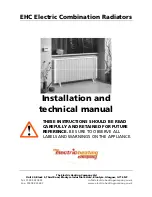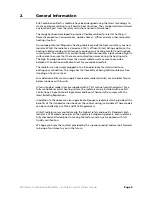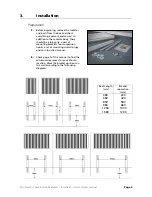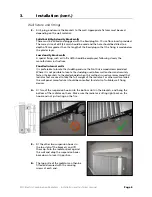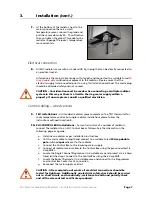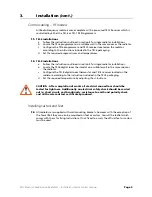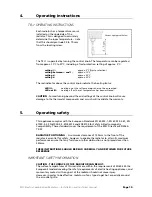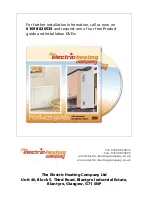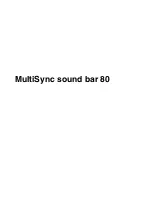
EHC Electric Combination Radiators –
Installation and technical manual
Page 7
3.
Installation
(cont.)
7.
At the bottom of the radiator, next to the
mains connection there is a small
temperature sensor. Loosen the gland and
pull the sensor down by 50 - 70 millimetres,
then re-tighten the gland. This enables the
radiator to gauge the room’s temperature
more accurately.
Electrical connection
8.
All EHC radiators come with a standard UK 3 pin plug that can be directly connected to
an electrical socket.
Alternatively the mains cable can be cut to length and connected to a suitable Fused
20
Amp
double
-
pole
switched spur adjacent to the radiator. Please ensure that the
electricity supply is disconnected prior to using this installation method. The mains plug
should be discarded safely and not re-used.
CAUTION – Consideration must be made when connecting a multiple radiator
system in this way as there is a limit to the ring mains supply within a
property. If unsure please consult a qualified electrician.
Control cabling – wired versions
9.
TEI1 installations
– All standard radiators come complete with a TEI1 thermostat for
room temperature control. For single radiator installations please follow the
instructions outlined in section 8.
10.
EHC CONTROL BOX installations
– For central control of a number of radiators,
connect the radiators to an EHC Control box as follows. See the schematic on the
following page as a guide.
a.
Install new radiators as per installation instructions
b.
Cut the mains cable to length and connect to a suitable Fused
20 Amp
double
pole
switched
spur
adjacent to the radiator
c.
Connect the Control Box to the incoming mains supply.
d.
Connect all radiator mains cables to the Control Box using the pre-connected 16
Amp MCBs.
e.
Locate the Single Channel Programmer in a suitable area and protect via a 3 Amp
fused switched spur. Connect to the Control Box using the 6 Amp MCB.
f.
Locate the Room Thermostat in a suitable area and connect to the Programmer
and Control Box Contactor A1 connection.
g.
Reconnect the mains supply and test.
CAUTION - After completion of works all electrical connections should be
tested for tightness. Additionally an electrical safety check should be carried
out ie: short circuit, earth continuity, resistance to earth and polarity check
and all the relevant test certificates produced.

